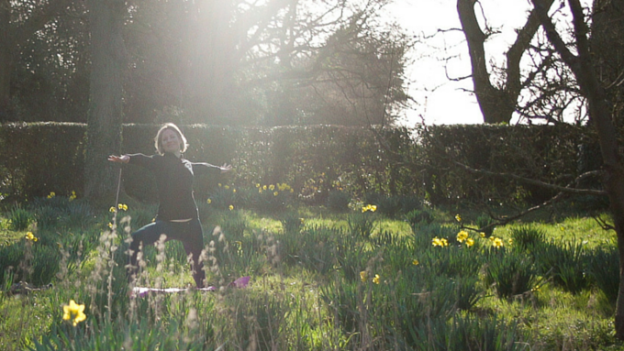Our very own Doctor Yogi, Andrew McGonigle, has filmed a series of short asana tutorials focusing in on the alignment of each posture and why this is important.
If you’ve ever wondered how to get your postures perfected, Doctor Yogi is here to help! Let’s explore the reasons why focusing on healthy alignment is so important and discover Andrew’s tips for getting there.
Correct alignment helps to stabilise our joints while incorrect alignment can cause our joints to become less stabile
A great example is the front knee joint in Virabhadrasana 2, Warrior 2. Ideally we want our knee to be positioned directly above the ankle joint. The knee is weight bearing and by allowing it to fall inwards or outwards, or holding the knee in a position beyond or behind the ankle potentially puts strain on the ligaments that are there to stabilise the knee and prevent it from dislocating.
Top alignment tips: make sure that your front shin is vertical and wrap your front buttock under until you can see your big toe and second toe on the inside of your front foot. We’ll explore this in more detail in my asana tutorial on Warrior postures.
>>Click Here to watch Andrew’s Warrior Tutorial>>
Healthy alignment makes our asana practice more efficient and allows us to find the balance between effort and ease
What I mean by this is that by stacking our joints on top of one another we use the strength of our bones and can keep muscular activity to a minimum. We want our muscles to be active in our practice but when we take our joints out of alignment our muscles have to work even harder to hold us in place and this can often create tension. We are practicing to release tension and not create it! Our asana practice is about finding the balance between effort and ease, strength and softness.
A great example is the alignment of our head in relation to our shoulders. The average human head weighs 5kg, which is a lot of weight for our neck to support. But the further you move your head forward in relation to your neck the heavier your head becomes. When your neck is flexed 60 degrees forward (think “text neck”) our head weighs the equivalent of 25kg! Imagine the strain on the muscles of your neck and back trying to hold your head in this position.
A nice way to reset your head back on top of your shoulders is to clasp your hands at the base of your skull, draw your elbows in so that they are shoulder-width apart and gently draw your head back into your hands. Take a few breaths here and slowly release. This will train your body on where your head should be!
 This post was written by Andrew McGonigle, a yoga teacher, massage therapist and anatomy teacher with a background in western medicine. Based in London, Andrew has been practicing yoga and meditation for 12 years and teaching since 2009. Teaching exclusively at triyoga, Andrew’s classes are open to all levels and encourage students to develop awareness of patterns of tension in their bodies with a goal to release stress. Andrew teaches anatomy and physiology on many different Yoga Teacher Training courses in London and internationally. Find Doctor Yogi on Facebook.
This post was written by Andrew McGonigle, a yoga teacher, massage therapist and anatomy teacher with a background in western medicine. Based in London, Andrew has been practicing yoga and meditation for 12 years and teaching since 2009. Teaching exclusively at triyoga, Andrew’s classes are open to all levels and encourage students to develop awareness of patterns of tension in their bodies with a goal to release stress. Andrew teaches anatomy and physiology on many different Yoga Teacher Training courses in London and internationally. Find Doctor Yogi on Facebook.






Leave a Reply